I still remember the first time I strapped one on and felt it become part of my day. It moved from novelty to necessity faster than I expected. I use it for fitness, calls, and quick glances at time without pulling out my phone.
Over the years the apple watch series has grown into a complete wearable ecosystem. I’ve owned aluminum, stainless, and titanium models, and each material changed how the device felt on my wrist and how it held up to daily life.
I’ll walk you through the features I actually use, how battery life performs in real routines, and which models or options suit different lifestyles. I’ll also explain why the apple watch ultra and satellite messaging matter when you leave the beaten path.
By the end, you’ll know which band, case, and type to order so the device you pick fits your life from day one.
Key Takeaways
- I rely on practical features and daily testing to judge each model.
- Case materials affect comfort, durability, and value.
- Battery life varies by use—match it to your routine.
- Health tracking and satellite safety offer real peace of mind.
- Mix-and-match bands and colors like space gray help personalize your device.
My quick verdict after months on my wrist
My daily use boiled the experience down to a few clear wins and a couple of trade-offs.
Bottom line: the latest apple watch series hits the sweet spot between smart features and reliable health tools. For most people, the mainstream model is the best pick in the watch series lineup.
Battery life is honest in my experience. I routinely meet or beat the 18‑hour rating on standard models, and Low Power Mode stretches life into the evening without stress.
Stepping up to the Ultra changes the game. With heavy mixed use I’ve seen multi‑day endurance — two full days with workouts and sleep tracking — which alters how I plan charging.
- Fitness and activity tracking feel effortless; closing rings is realistic for daily users.
- Heart rate locks on fast for runs and gym sessions; rate alerts nudged me on recovery days.
- Sleep tracking helps spot late nights and nudges better rest the next day.
- Calls on the go are clear; handoffs to my phone stay seamless.
Apple Watch
In 2025 the apple watch platform feels like a fully formed toolbox for daily life.
The line started in 2015 and now updates yearly as distinct apple watch series releases. Models vary by case material — aluminum, stainless steel, titanium — and by connectivity. Some aluminum options are GPS‑only; higher‑end materials often include cellular.
Sensors are the core: optical heart rate for daily tracking, ECG for spot checks, and blood oxygen for wellness insights. These tools make the device as much a health companion as a notifier.
The display and screen bezels have thinned over several generations, and always‑on improvements speed quick glances. watchOS 11 ties the ecosystem to modern iPhone models, so your devices play nicely before you order.
| Model Type | Case | Connectivity | Best Use |
|---|---|---|---|
| Mainstream Series | Aluminum / Stainless | GPS or Cellular | Everyday health, notifications |
| Premium Series | Titanium / Stainless | Cellular | Style, longer durability |
| apple watch ultra | Titanium, rugged | Dual GPS + Cellular | Endurance, outdoor sports |
- Nike and Hermès editions add exclusive bands and faces, useful if looks sway your options.
- Apple Watch Studio helps you mix case and band so the products feel personal at order.
Design, case materials, and colors I actually wear
How a case feels on my wrist often decides which model I reach for each morning. The right material changes comfort, durability, and how I style the device for the day.
Aluminum vs stainless steel vs titanium: weight, feel, and durability
Aluminum is the lightest choice and the easiest to forget during workouts. It can scuff, but darker hues like space gray hide wear well.
Stainless steel brings weight and a polished look. It resists small scratches but will show dings if you bump it hard.
Titanium sits between them: lighter than steel, tougher than aluminum. On Ultra models, titanium paired with sapphire glass stands up to real trail abuse.
Space Gray, Midnight, and other color options that age well
I keep reaching for neutral tones—space gray, Midnight, or natural titanium—because they match more bands and hold up over time.
Color choices influence perceived wear. Dark finishes mask scuffs; polished steel shows character. Pick the tone that fits how rough you are on gear.
| Material | Feel on wrist | Durability | Typical features |
|---|---|---|---|
| Aluminum | Very light, casual | Can scuff; hides wear in dark colors | Most GPS models; sport bands fit well |
| Stainless steel | Heavier, premium | Resists scratches; shows dings | Often paired with cellular; polished look |
| Titanium | Light and strong | Excellent against bumps; sapphire crystal on Ultra | Durable builds, cellular common on premium models |
I swap bands fast—Sport Loop for workouts, then leather or Milanese for dinner. The touchscreen and haptics feel consistent across materials, so my choice is mostly style and toughness.
Practical pick: go neutral if you want longevity; choose titanium if you need rugged reliability.
Sizes, screens, and display quality in daily use
A bigger screen changes how often I pull my phone and how I read maps on the run.
Size matters. The recent watch series moved from 38/42 mm to 40/44 mm, then 41/45 mm, and now Series 10 at 42/46 mm. The Ultra 3’s 49 mm titanium footprint is noticeably larger. On my smaller wrists the Ultra’s face feels huge. For glanceable info, though, it’s unbeatable.
Display, brightness, and outdoor visibility
The Ultra 3 gets a slightly bigger visible area thanks to slimmer bezels. That extra room reduces taps and speeds map reading while I run.
Always‑on behavior improved across apple watch series. Higher brightness helps on sunny routes and keeps GPS cues readable without squinting.
Touch, bands, and practical trade-offs
Flat crystals felt a hair sharper for quick swipes compared with curved glass. Band compatibility stays simple: bands swap across size classes within the same generation.
| Size | Best for | Drawback |
|---|---|---|
| 42 / 41 mm | All‑day comfort, sleep | Smaller screen for maps |
| 46 / 45 / 49 mm | Glanceable metrics, outdoors | Heavier on small wrists |
“Bigger screens make health checks and rate alerts visible at a glance.”
- Under 6.5″ wrist: favor 42/41 mm for comfort.
- 6.5″ and above: 46/45 mm or Ultra 3 if you need maps and GPS cues at a glance.
I tune brightness and always‑on settings to balance battery life and visibility. Darker color finishes visually shrink the case, which helps when I want a less bulky look.
Performance, watchOS, and connectivity that matter
How fast apps open and how reliably it stays online decide if I can ditch my phone for short trips.
watchOS 11 on the latest watch series feels snappy. App launches are quick, scrolling stays smooth, and widgets surface the things I need without hunting. The display wakes reliably when I move, which saves time on runs and during workouts.
Compatibility and how devices talk
New models ship with watchOS 11 and need an iPhone XR/XS or later running iOS 18 to set up. Devices pair over Bluetooth, fall back to Wi‑Fi for app data and streaming, and use LTE when available.
When GPS and cellular let you go phone‑free
GPS‑only aluminum models handle runs, swims, and logged workouts fine. For calls, streaming, and real independence, cellular on stainless or titanium models matters.
- I leave my phone at home for quick runs, grocery trips, or pool sessions with AirPods and cellular enabled.
- Health logs and heart checks record offline and sync later when the phone reconnects.
| Tier | Good for | Drawback |
|---|---|---|
| GPS only | Budget workouts, basic tracking | No standalone calls/data |
| Cellular (stainless/titanium) | Calls, streaming, true phone‑free use | Shorter battery life under heavy LTE/GPS |
| Ultra (titanium) | Rugged trips, stronger radios | Heavier, pricier |
Battery realities: leaning on LTE or constant GPS cuts life noticeably. I tweak Wi‑Fi settings, lower screen wake time, and use Low Power Mode to stretch a day. For long outings I still bring my phone, but for quick errands the setup is confidently phone‑free.
Health and fitness features I rely on
I rely on the device every day to keep tabs on my body and workouts. Its sensors give quick, usable data that fit into my routine without fuss.
Heart rate accuracy, alerts, and Activity tracking
Heart rate locking is fast—the sensor grabs a reliable read during warmups and stays steady through intervals. Rate alerts nudged me to recover after one tough session, which prevented overdoing it.
Activity rings keep goals simple: Move, Exercise, and Stand. Closing them makes fitness feel like a small win every day.
ECG and blood oxygen: when I use them and why
I use ECG when something feels off. It’s quick and FDA‑cleared on supported watch series, so I can share a rhythm snapshot with my doctor if needed.
Blood oxygen is a wellness read for me. I check it on high trails and flights to spot trends in recovery and altitude response.
Sleep tracking and the new Sleep Score in context
Sleep tracking now adds a Sleep Score that matches how I feel in the morning. Low scores after late nights push me to wind down earlier.
Running, cycling, and gym workouts with advanced metrics
For running and cycling, GPS accuracy and live heart zones matter most. I watch pace, splits, and stride data in real time.
Strength sessions benefit from automatic set detection and calorie estimates tied to heart rate and motion. Everything logs offline and syncs to my phone when I’m back.
“Weekly runs, two cycling rides, and three gym days—tracked without fuss.”
Battery life and charging: days, not hours, with the right model
Battery life often decides which model I strap on for the weekend or the commute.
Real numbers: my apple watch series typically clears a full workday plus an evening workout. That aligns with the 18‑hour claim for mainstream models, and with careful settings I hit a true “day and a half” on busy days.
On the Ultra 3, I consistently see multiple days. Wirecutter‑style use—sleep tracking, GPS workouts, podcast streaming, and occasional satellite messages—lands me around 42–50 hours.
What drains battery fastest and how I manage it
LTE, continuous GPS, and a bright always‑on display are the main culprits. I limit LTE when possible, preload music to avoid streaming, and lower brightness on cloudy days.
- A quick top‑off after a shower or during breakfast usually covers the morning.
- For long runs I enable GPS only when needed and carry a portable puck if the route is multi‑hour.
- Low Power Mode cuts background updates and less‑frequent heart reads to preserve life.
| Model | Typical real use | Fast drains | Best charging habit |
|---|---|---|---|
| Series 11 | Workday + evening workout | Bright display, LTE streaming | Top‑off at breakfast; nightly charge |
| SE / GPS only | Day use, workouts | GPS during long runs | Charge before long outings |
| Ultra 3 | Multi‑day trips with sleep + GPS | Satellite messages, heavy streaming | Fast charge before bed; skip puck on short trips |
Low Power Mode trade‑offs: you lose some background updates and less‑frequent sensors, but you gain predictable all‑day life. For most days, Series 11 is my pick. If I need true multi‑day freedom, the Ultra 3 wins every time.
Apple Watch Ultra 3 in the wild
On long hikes and open-water dips I noticed how much the Ultra 3 changes the game.
Massive display, rugged titanium case, and sapphire durability
The 49 mm titanium body feels purposeful on the wrist. The slimmer bezel gives a noticeably larger display for maps and metrics. Reading pace, elevation, or a route turn at a glance is effortless.
The titanium case and sapphire crystal take knocks well. I bumped it on rocks during a scramble with no visible damage. The orange Action button also works great with gloves—start a workout without fumbling the screen.
Dual‑frequency GPS, depth sensor, and the 86 dB siren
Dual‑frequency GPS (L1/L5) kept my tracks accurate under heavy tree cover and in canyons where single‑band units drift.
The depth sensor auto‑launches the Depth app to 40 m — useful for pool laps and snorkeling. I also tried the 86 dB siren; a long press of the Action button made it shockingly loud and simple to trigger.
Who should skip it because of size or price
This model reaches ~42–50 days of usable hours in my mixed tests, so battery life is a big win. But the size can overwhelm smaller wrists and the price is steep if you won’t use rugged features.
“You’re paying for durability, dual‑band GPS, battery, and tools—not extra health sensors.”
- Best for endurance runners, hikers, divers, and multi‑day trips.
- Skip it if you want a lighter daily watch or don’t need advanced GPS and rugged gear.
Satellite messaging and emergency features I tested
Testing off-grid messaging showed me the small patience and big payoff of satellite links.
I sent my first satellite message from a redwood trail. It took a couple of minutes to lock a link and another two to three minutes to deliver a short check‑in. That was fine for “I’m safe” notes, not long chats.
Messaging and location sharing off‑grid: how long it takes
The interface guides you to point at the sky and shows a green lock when ready. GPS location sharing works even without cell or Wi‑Fi, so friends can see where I am via Find My when the link completes.
Practical note: trees and canyons slow the connection. Be ready to hold position and wait; framing your text tight helps delivery speed.
Emergency SOS via satellite vs paid cellular plan realities
Emergency SOS via satellite is free for emergencies even if you don’t have a cellular plan. Routine satellite messaging and continuous Find My on the wrist, however, usually need an added watch data plan—roughly $10/month on major US carriers.
I ran the guided emergency workflow and it asks a few structured questions. That data, plus GPS coordinates, gets routed to responders once sent.
“The watch guides you to aim at the sky and shows when the satellite link is live.”
- I used a quick check‑in from the trail; the Ultra 3’s larger battery handled the session better than smaller models.
- Satellite is for essentials: an OK message or location, not a back‑and‑forth conversation.
- If you have an iPhone 14+, similar SOS features exist, but wrist access and battery life make the watch easier in the field.
| Feature | What to expect | Notes |
|---|---|---|
| Emergency SOS via satellite | Free for emergencies | Guided report + GPS; no monthly fee |
| Routine satellite messaging | Minutes to connect, 2–3 min to send | Often requires ~$10/month carrier plan |
| Off‑grid GPS sharing | Works without cell/Wi‑Fi | Friends see location once message delivers |
My final tip: plan concise messages, aim at open sky, and accept a short wait. For regular off‑grid use, the Ultra 3 is the most practical model to carry.
Apple Watch + iPhone + AirPods: my ecosystem sweet spot
When I leave my phone at home, the trio of watch, iPhone, and AirPods keeps me connected. I take calls, stream music, and reply to messages using only my wrist and earbuds. That freedom matters on quick errands and mid‑ride check‑ins.
Calls, streaming, and Siri replies with just watch and AirPods
Calls sound full through AirPods. I take short work check‑ins without fishing for the phone. Siri handles timers, notes, and quick replies so I stay moving.
For streaming off‑phone you need cellular or nearby Wi‑Fi, or you can sync playlists ahead of long runs. Fitness+ also surfaces real‑time metrics on the phone or on compatible products when I want a bigger display.
Maps routes, Live Activities, and handoff that save me time
I create custom routes on my iPhone and push them to the watch. On the trail the wrist gives taps and haptic cues that cut wrong turns.
- Live Activities for cycling pop up on my phone automatically for fast glances.
- I keep heart rate tiles and tracking toggles in the Dock for one‑tap access.
- Shortcuts and handoff shave minutes from routines, which add up over time.
Fitness+ with Apple Watch: motivation that sticks
A quick glance at real‑time metrics is all I need to commit to a full workout. I use the service when my motivation dips because the overlayed rings and heart data keep me honest.
The apple watch shows heart rate, calories, and Activity rings live on the display during classes. Trainers cue intensity zones that match what I see on my wrist. That sync makes pacing simple.
Audio‑guided walks, runs, and meditations work with just the watch and AirPods. I can leave the phone behind and still follow a full session without interruptions.
I like the three‑month trial included with new devices. It gives time to build habits and explore strength, HIIT, cycling, yoga, and meditations without rushing a decision.
“Metrics stay visible even when I glance away; the display prompts keep me in the zone.”
| Benefit | How it helps | Best use |
|---|---|---|
| Live heart rate | Real‑time effort tracking | Intervals, pacing |
| Activity rings | Daily goals and motivation | Consistency across days |
| Audio guides | Phone‑free workouts with AirPods | Walks, runs, meditations |
| Cross‑device sync | Metrics appear on iPhone/Apple TV | Classes at home or on the go |
Models and series guide: picking the right Apple Watch today
Choosing the right model comes down to your routine, wrist size, and how much ruggedness you need.
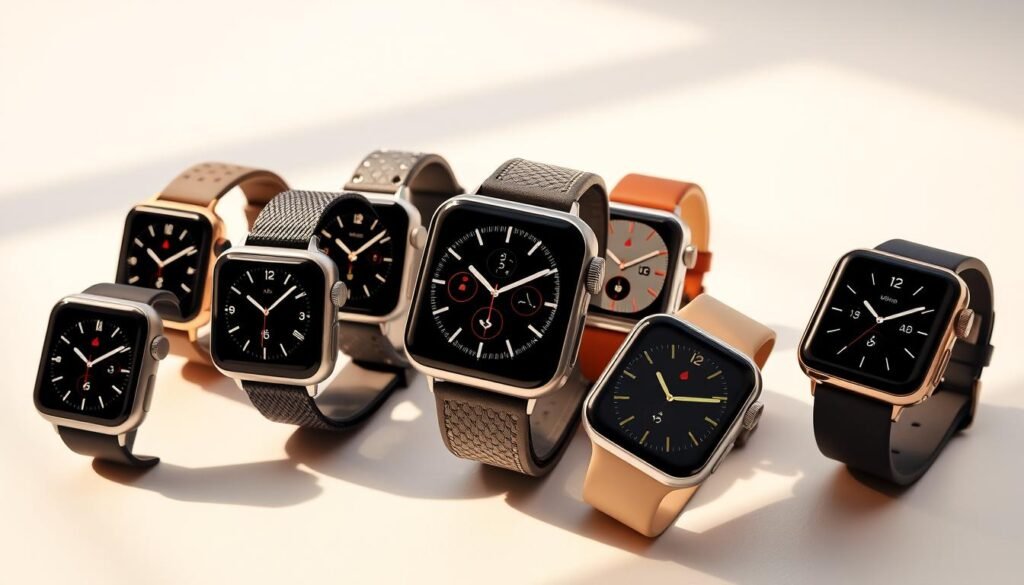
Series 11: best for most people and why
I recommend Series 11 for most buyers. It has the newest chip, a crisp display, full health sensors, and solid battery for daily use.
Neutral case colors and aluminum options keep the price sensible while offering cellular on higher trims.
SE 3: budget pick with the essentials
The SE 3 nails basics: reliable heart tracking, fast performance, and an aluminum case that is light for workouts.
It lacks ECG and SpO2, but if you want core fitness and notifications on a budget, this is the value choice.
Ultra 3: for endurance athletes and rugged adventures
The apple watch ultra is the 49 mm titanium model with dual‑band gps, depth sensor, a long battery, and the Action button.
Pick Ultra 3 if you need multi‑day battery and real-world durability for hikes, dives, or long races.
Where Series 10 fits now that Series 11 is here
Series 10 is a good deal if you find one, but I’d prioritize Series 11 for longevity and newer health features.
Quick decision tree:
- Daily use and best value: Series 11.
- Budget and light workouts: SE 3 (aluminum).
- Endurance and rugged: Ultra 3 (titanium).
| Model | Best for | Notes |
|---|---|---|
| Series 11 | Most users | Latest chip, full health, good display |
| SE 3 | Budget | Aluminum case, core sensors |
| Ultra 3 | Endurance | Titanium, dual‑band GPS, bigger battery |
Bands, cases, and customization I rotate through
Changing bands takes seconds, but the visual and comfort gains last all day.
Sport Loop, Nike, Hermès, and swapping bands the smart way
I keep a Sport Loop for sweaty runs, a Nike strap for breathability, and a Hermès leather for dressier nights.
Swap time: it really takes seconds and keeps the device fit for the moment.
Size compatibility and Apple Watch Studio
Bands stay interchangeable inside size classes (38/40/41 mm vs 42/44/45 mm; Series 10 moved to 42/46 mm), so older bands often still work with new models.
Apple Watch Studio lets me mix any case and band combo since Series 5. I build combinations that suit my color and case preferences instead of settling for presets.
- Dark case with a bright band makes a bold look.
- Aluminum feels lighter with sport bands; stainless or titanium pairs better with metal bracelets.
- Third‑party bands that follow official guidelines save money and still fit well.
“A quick band swap changes comfort, style, and how I wear the device all week.”
Care tip: rinse bands after workouts and rotate materials to extend life.
Water, dust, and outdoors: how tough it really is
I tested this model through swims, showers, and muddy trails to see what really survives a weekend outdoors.
Real tests matter. First‑gen units were only splash resistant. The apple watch series moved to 50 m swim suitability with Series 2. That made pool laps and wet runs painless in daily use.
From Series 7 onward the watch series added IP6X dust resistance. That helped on dusty trails, beach days, and yard work. I stopped worrying about grit in ports or tiny crevices.
Case material changes the story. Aluminum handles knocks fine for daily life. Titanium resists dents and pairs with a sapphire display and tougher screen on Ultra models.
I use the Depth app for casual dives; the device auto‑detects submersion and logs sessions to 40 m on rugged models. After saltwater I always rinse and dry the band and case to prevent corrosion or smell.
Temperature swings and UV faded a couple of bands faster than the watch itself. Bottom line: treat it like gear, not armor. I’m confident taking mine on hikes and travel without babying it.
Pricing, value, and monthly costs to expect
I compare case material, connectivity, and the small recurring fees that add up fast.
Base price snapshot: aluminum is the value play, stainless adds cost and almost always includes cellular, and titanium commands the premium for the apple watch ultra and other high‑end models.
Case materials and cellular price jumps explained
Choosing stainless or titanium typically raises the upfront price because those models ship with cellular by default. GPS‑only aluminum saves money if you keep your phone nearby.
The $10/month plan, and when you can skip it
Major US carriers charge about $10/month to add a watch line. That’s roughly $120 a year extra.
Skip the plan if you rarely leave your phone behind or don’t stream from the wrist. Opt for cellular if you need true phone‑free calls, maps, or streaming.
| Case | Upfront price | Typical connectivity | Who should buy |
|---|---|---|---|
| Aluminum | Lowest | GPS or optional cellular | Everyday users who keep a phone nearby |
| Stainless steel | Mid | Cellular common | Style and on‑wrist calling |
| Titanium (Ultra) | Highest | Cellular, stronger radios | Endurance athletes, multi‑day trips |
Resale tip: neutral colors and stainless stay desirable. Bright or limited colors can drop resale value faster.
“Emergency SOS via satellite remains free; routine satellite messaging often needs a paid plan.”
My setup: Series 11 aluminum with GPS for daily use, no monthly fee. For trips I borrow an Ultra on cellular. Budget for the $10/month if you want independence from your phone.
Quick checklist:
- Pick aluminum GPS if you want low price and no monthly fee.
- Choose stainless or titanium if cellular and resale matter.
- Add the $10/month plan only if you truly need phone‑free connectivity or routine satellite messaging.
My buying advice by wrist size and lifestyle
Picking the right size and model is the single best way to make sure you actually wear it every day. Comfort, sleep tracking, and activity needs should steer your choice more than chasing the biggest screen.
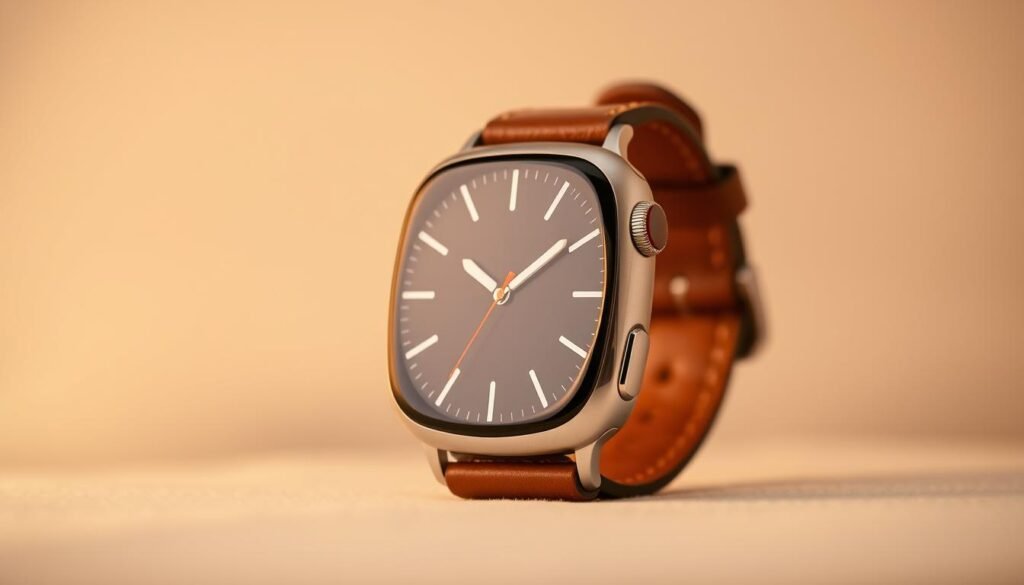
Small wrists vs large screens: comfort and sleep tracking
I advise small‑wristed folks to try a 42 mm Series 11 first. The Ultra 3’s 49 mm can feel bulky, slide during workouts, and make sleep tracking uncomfortable.
If sleep is a priority, lighter aluminum cases in smaller sizes win for me. They stay put overnight and still record reliable sleep data.
Runners, cyclists, divers, hikers: the best fit
For serious running, Ultra 3’s dual‑frequency gps shines in cities and canyons. For most runners, a Series 11 gives great accuracy and value.
Cyclists benefit from a larger display for glanceable metrics; Ultra’s battery helps on long rides. Divers and frequent swimmers should consider Ultra for the depth sensor and tougher build.
Hikers and backpackers gain from Ultra’s longer battery, siren, and satellite tools—fewer safety compromises on remote routes.
“Match models and options to your routine: GPS‑only for urban workouts, cellular for true phone‑free training.”
| Need | Best pick | Why |
|---|---|---|
| Everyday + sleep | Series 11 (smaller size) | Comfortable, accurate sleep, good display |
| Endurance/outdoors | Ultra 3 | Dual GPS, battery, rugged tools |
| Budget fitness | SE 3 | Core tracking, light case |
Final picks: Series 11 for most, SE 3 if budget is tight, Ultra 3 for endurance outdoors. Choose bands that cinch securely for sleep and swap to breathable loops for workouts.
Pros and cons after long‑term use
Long‑term wear taught me which strengths really matter and which compromises sting.
Pros: the apple watch nails core features like notifications, payments, and workouts. The display and screen responsiveness make quick glances actually save time during busy days.
Health technology is a big win. Optical heart rate, ECG on supported apple watch series, and blood oxygen checks gave me useful signals and peace of mind during training.
Pros: Ultra’s battery life changed how often I think about charging. GPS accuracy, safety tools, and deep ecosystem integration make these products feel polished for iPhone users.
Cons: the standard battery still needs a daily charge, and heavy LTE or constant GPS use cuts life fast. Satellite messaging is slow by design and best for brief status updates, not long chats.
Size and cost matter. Ultra 3’s large frame can overwhelm smaller wrists, and the price is steep if you won’t use rugged extras. Also, some health features depend on the exact watch series you buy, so double‑check before you commit.
| Aspect | Strength | Drawback |
|---|---|---|
| Features | Notifications, payments, workouts | Varies by model |
| Health | Heart rate, ECG, SpO2 | Depends on series |
| Battery & GPS | Ultra: multi‑day; GPS accurate | Standard: daily charge |
“The strengths easily outweigh the trade‑offs for how I live and train.”
Conclusion
Conclusion
This device remains my go‑to companion for daily health, workouts, and saving small amounts of time that add up.
The latest apple watch series strikes the best balance of features, comfort, and price for most buyers.
If you spend time outdoors or need multi‑day battery, the Ultra 3 is worth the premium for dual‑band GPS, rugged build, and satellite tools.
Health tracking feels mature and reliable, and the tight ecosystem between devices helps maps, replies, and routines move faster than before.
Pick the model that fits your wrist and budget, choose bands that match your life, and enjoy the daily nudge toward better habits.
Thanks for reading — now pick your apple watch and start your next chapter with a smarter routine.
FAQ
What sizes should I pick if I want a big screen but not a bulky feel?
I recommend sizing by wrist circumference and daily use. If you want a large display for maps and workout metrics but still want comfort while sleeping, the mid‑size model balances both. The Ultra‑class 49 mm gives massive real estate but feels hefty on smaller wrists. Try both on if possible and pick the one that lets you type, sleep, and exercise without readjusting.
How long does battery last in real life for the latest series and the Ultra model?
In my testing, the mainstream series typically delivers about a day to a day and a half with mixed use. The Ultra model easily stretches to two days or more with similar habits thanks to a bigger battery. Low Power Mode and turning off always‑on display push those numbers further for multi‑day trips.
Can I rely on heart rate and ECG readings during intense training?
Heart rate sensors are very good for steady cardio and interval sessions; ECG is reliable for rhythm checks but not a replacement for medical tests. For high‑intensity efforts I pair wrist data with a chest strap when I need clinical‑grade accuracy, but for daily tracking the built‑in sensors give me actionable trends.
Is GPS accuracy good enough for trail runs and bike routes?
Dual‑frequency GPS in the top model dramatically improves route precision in canyons and urban canyons. For most runners and cyclists, the standard GPS is strong outdoors. I saw fewer route jumps and tighter distance totals when using dual‑frequency on technical trails.
Do sleep tracking and the new Sleep Score actually help improve sleep?
Yes—when I use them consistently. The score gives simple guidance on duration, efficiency, and restorative time. Pair that with wind‑down routines and the watch’s gentle haptics and I noticed steadier sleep patterns over weeks.
When does cellular/LTE make sense versus GPS‑only models?
I go cellular when I want to run or ride without a phone and still take calls or stream music. If you mostly workout near your phone, GPS‑only saves cost. Cellular plans add monthly fees, so weigh independence against budget.
How durable are the case materials: aluminum, stainless, and titanium?
Aluminum is light and resists daily scratches well; stainless steel looks premium but shows scratches more. Titanium offers the best strength‑to‑weight ratio and resists corrosion, making it my top pick for rugged use and long trips.
Is the always‑on display readable in bright sun and does it drain battery a lot?
The always‑on mode is readable outdoors thanks to increased brightness on high‑end models; it does use more power but modern models manage that efficiently. I turn it off for multi‑day excursions to conserve energy.
How fast does the device charge and what charging habits extend battery life?
Fast charging replenishes a day’s use in under an hour on recent models. To extend battery longevity, I avoid keeping it at 100% constantly and use shallower charge cycles—charging overnight to about 90% and topping up during the day when convenient.
Can I send messages or emergency signals when I’m off‑grid?
Yes—satellite messaging and emergency SOS can send location and short texts when you’re outside cell coverage. It takes longer than cellular and depends on clear sky view, but it’s a reliable fallback for true backcountry situations.
Which model should most people buy right now?
For most users, the latest series model hits the sweet spot for performance, battery life, and price. If you need rugged durability and long battery life for adventure sports, consider the Ultra class. If budget matters, the SE variant covers essentials without breaking the bank.
Are bands interchangeable across generations and sizes?
Bands are compatible across recent generations as long as you match case size. Sport bands, loops, and premium straps all swap quickly, letting me tailor comfort and style for workouts, office days, or sleep tracking.
Does the device work well with earbuds for calls and music when my phone is not nearby?
Yes—paired earbuds let me take calls, stream music, and use voice assistants directly from the wrist when I’m away from my phone. Cellular models make this seamless; GPS‑only units require the phone nearby for streaming.
What water resistance should I expect for swimming and diving?
Most consumer models handle pool and open‑water swims easily. The Ultra‑class adds deeper dive capabilities and specialized sensors for serious underwater use. Always rinse after saltwater exposure and follow the manufacturer’s depth guidelines.
How much does case material affect price and monthly ownership costs?
Titanium and stainless steel variants carry higher upfront prices and often higher cellular accessory fees. Aluminum models are the most affordable and pair well with standard plans. Factor in the recurring cellular plan cost if you choose LTE.
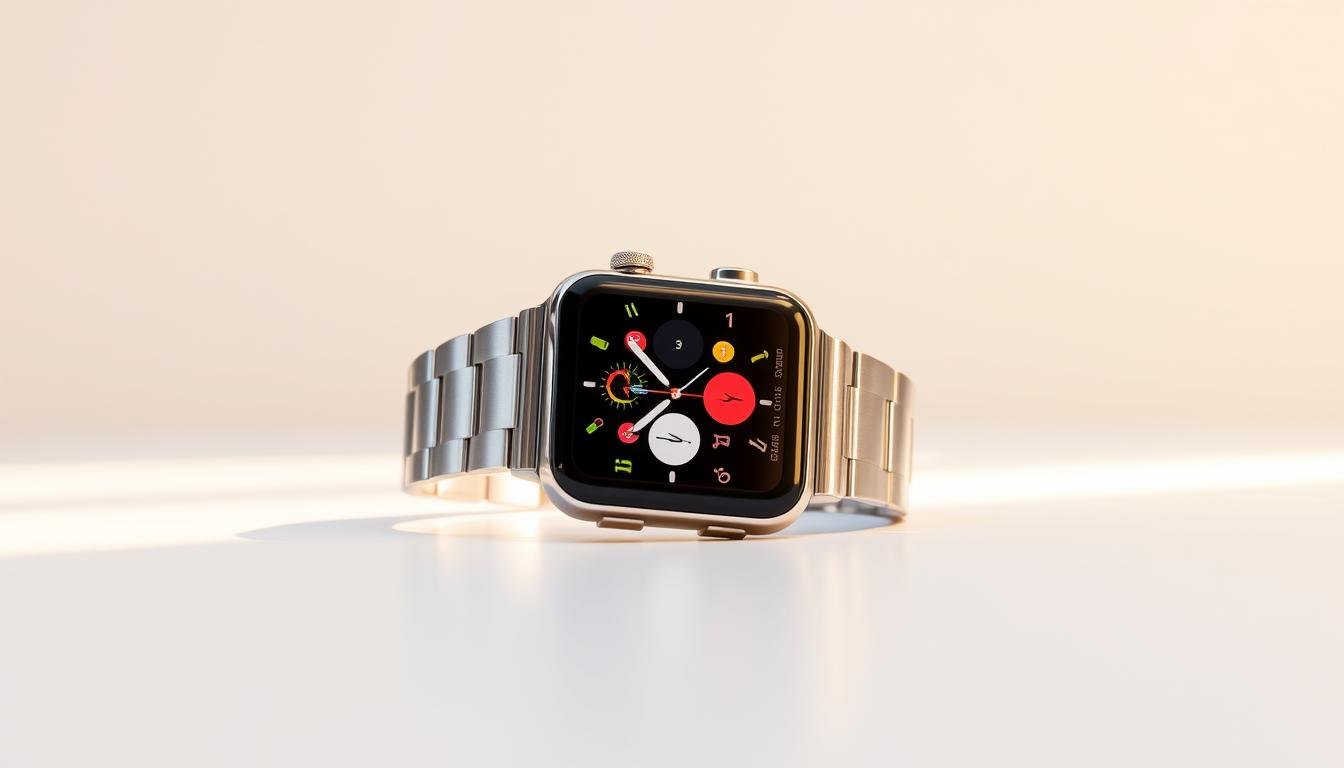

![Apple Watch Ultra 2 [GPS + Cellular 49mm] Smartwatch with Rugged ...](https://m.media-amazon.com/images/I/51QbG7GtQcL.jpg)

![Apple Watch Ultra [GPS + Cellular 49mm] Titanium Case with Midnig...](https://m.media-amazon.com/images/I/41NQgyV24pL.jpg)

![Apple Watch Ultra 3 [GPS + Cellular 49mm] Running & Multisport Sm...](https://m.media-amazon.com/images/I/41H6S7vjc+L.jpg)

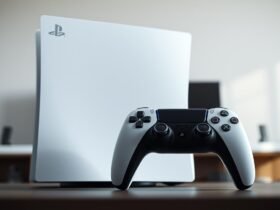

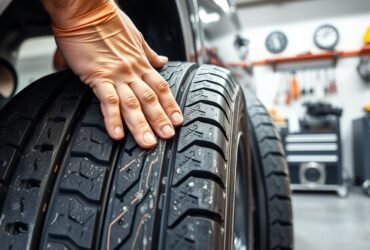





Leave a Reply